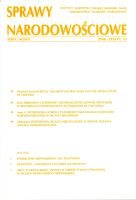Sudańska mozaika. Sytuacja etniczna w wioskach nad Nilem między III a IV kataraktą
The Sudanese Mosaic: an Ethnic Situation in Villages on the Nile between III and IV cataract
Author(s): Maciej KurczSubject(s): Social Sciences
Published by: Instytut Slawistyki Polskiej Akademii Nauk
Keywords: North Sudan; ethnography; field research; ethnicity
Summary/Abstract: Sudan is called “little Africa,” not only because of its geographical location but also due to the large number of different peoples inhabiting it. Even the northern part of the country, apparently homogenous with respect to ethnicity, and unified by Islam and Arab culture, is a place where a variety of tribes have lived together for ages. The article presents material from field research conducted by the author in North Sudan in 2003 and 2004. Nubians, the native population of this corner of the Nile Valley, have come under strong Arab influence which has absorbed both their culture and their language. In the villages under investigation, relics of Nubian culture can now be found only in folklore customs, especially those connected with crucial moments in human life, mostly related to women. The majority of the inhabitants of this part of the Nile Valley belong to Arab tribes, with two major groups, Djaaliin and Djuhaina. The two groups differ significantly in their way of life. Arab Djaliin are farmers who are settled the Nile Valley for good, while Arab Djuhaina are predominantly nomad herdsmen. In mutual relations between the two tribes there are many negative stereotypes and much antagonism, even more so because of the immigration of other minorities, traditionally of a lower and marginalized status, into the Nile Valley, such as Gipsies, Copts (Egyptian Christians) and the so-called Fellata (descendants of former slaves).
Journal: Sprawy Narodowościowe
- Issue Year: 2008
- Issue No: 32
- Page Range: 135-148
- Page Count: 14
- Language: Polish

